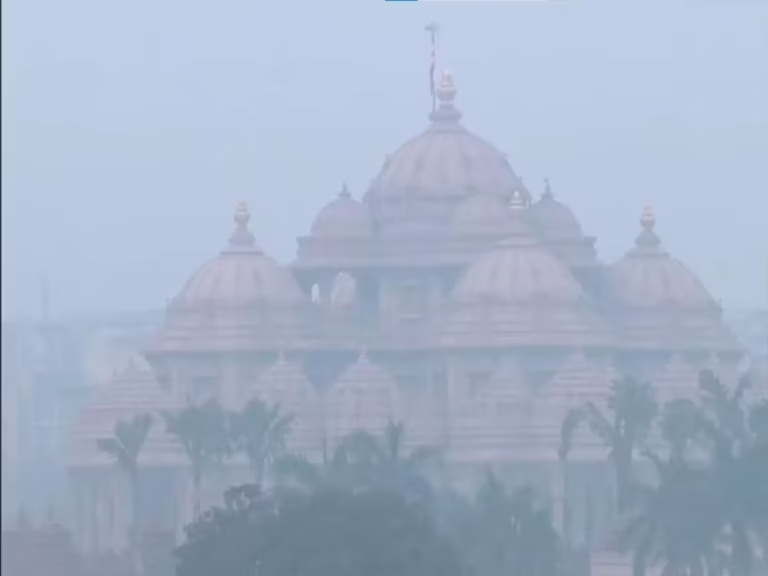Delhi maintains AQI under very poor category The Air Quality Index (AQI) in Delhi on Wednesday morning remains under the “very poor” category with the Graded Response Action Plan (GRAP) II norms already in place.
According to the Central Pollution Control Board (CPCB), the AQI in the RK Puram area of south west Delhi remains “very poor” at 380, as of 7:00 AM today. The AQI at Anand Vihar also remains “very poor” at 355.
Ashok Vihar recorded an AQI of 355, followed by Bawana at 376 under the “very poor” category. AQI in the Dwarka Sector 8 area remains at 353, 362 in ITO, and 394 in Nehru Nagar.
Similarly, the AQI in Chandni Chowk remains “very poor” at 332. Around Akshardham, the AQI was recorded at 360, which also falls under the “very poor” category.
A day after Diwali, Delhi recorded its air quality in the “very poor” category on Tuesday. As per CPCB, the overall AQI in the national capital stood at 351 as of 4:00 PM.
Bawana recorded an AQI of 424 and remains the only area with air quality that falls under the ‘severe’ category. AQI in Anand Vihar stood at 332, Ashok Vihar 373, Burari Crossing 388, IGI Airport (Terminal 3) 295, ITO 349, Lodhi Road 334, Mundka 380, Najafgarh 312, Narela 363, Patparganj 320 and Punjabi Bagh 399.
Commission for Air Quality Management in NCR and Adjoining Areas’ (CAQM) sub-committee on GRAP comprehensively reviewed the air quality scenario in the region as well as the meteorological conditions and air quality forecasts on Sunday and took a call to invoke the 12-point action plan as per Stage-II of the extant GRAP in the entire National Capital Region in an effort to prevent further deterioration of air quality.
Meanwhile, Delhi Environment Minister Manjinder Singh Sirsa on Tuesday highlighted the efforts in controlling Delhi’s pollution, stressing that despite a 21 per cent growth in construction and an 8 per cent increase in new vehicle registrations, pollution levels have remained stable.
He also added that the arbitrary bans on older vehicles imposed earlier have been rationalised, ensuring fairness without compromising environmental goals.”This shows that when intent and policy are both clean, development and environment can progress together,” Sirsa said while addressing a press conference.
Sirsa also shared that Delhi’s post-Diwali air quality is significantly better than in previous years: 2020 (under AAP rule): AQI 462, 2024: AQI 360, 2025: AQI 351.
“This clearly proves that crackers are not the main cause of pollution. Delhiites celebrated responsibly, and our measures ensured stability in air quality,” Sirsa said.
He added that Delhi’s AQI rose only by six points — from 345 to 351 — compared to yesterday, which shows the stability and effectiveness of ongoing anti-pollution measures.
- Published On Oct 22, 2025 at 08:44 AM IST
Join the community of 2M+ industry professionals.
Subscribe to Newsletter to get latest insights & analysis in your inbox.
All about ETAuto industry right on your smartphone!

Images are for reference only.Images and contents gathered automatic from google or 3rd party sources.All rights on the images and contents are with their legal original owners.

